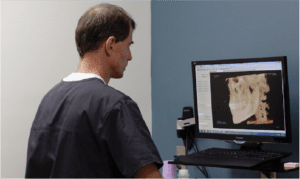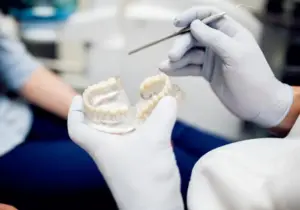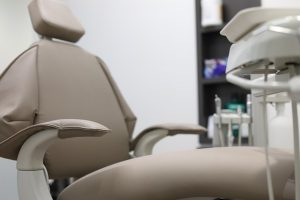Early Detection Is Important
Oral cancer remains a significant health issue in Clinton County. Nearly 35,000 new cases of oral cancer were diagnosed in 2008 in the United States. Risk factors for oral cancer include smoking, smokeless tobacco use, long-term alcohol use, or exposure to HPV-16 (human papilloma virus). HPV-16 is also associated with most cervical cancers in women. There is a 15 times greater risk of oral cancer in patients who both smoke and use alcohol.
Initial evaluation of a problem area in your mouth can start either with your primary care physician or family dentist. Any area of discoloration or sore in the mouth which does not heal within two weeks needs to be evaluated. If your physician or dentist is concerned, a referral to either an oral surgeon or an ear, nose, and throat physician will be made, the area will be evaluated, and a biopsy will be performed.
Unfortunately, oral cancer usually does not cause significant pain in the early stages. This can result in a delay in patients being evaluated and treated. If caught early, an 80 to 90% survival rate is common. However, in most cases the disease is advanced at the initial examination which significantly lowers the 5-year survival rate to about 50%. Usually an initial biopsy of the area in question is performed. Once the diagnosis is confirmed, additional evaluation is necessary.
Coordinating treatment with a head and neck surgeon is very important and most cases will require a CT with other tests. Surgery is the primary treatment for most oral cancers. Radiation therapy and/or Chemotherapy may also be required which can be coordinated at the Foster J. Boyd Cancer Center with Dr. Ling or Dr. Skinner.
As with most cancers, early detection and treatment are extremely important. Routine oral cancer screening with your dentist or primary physician is extremely important to help save lives and improve quality of life for oral cancer patients.










